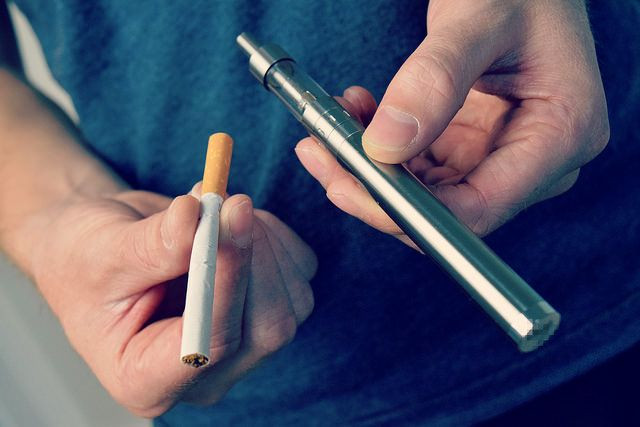Are E-Cigarettes Safe? To Find Out, One-Time Experimenters Need To Be Excluded From Health Studies

How do you measure meaningful use of a new product? For lots of stuff, a precise and accurate measurement may not matter to anyone other than a marketer, but when it comes to goods that potentially impact your health — e-cigarettes, say, or soy milk — the answer is extremely important. To include "experimenters" in assessment studies, one research team says, is of questionable value when monitoring public health trends.
Ah, the experimental ones. Whether it’s sriracha or sexual identity, CrossFit training or psychedelic drugs, there are always those who commit themselves to the cause and those who truly hate the cause… and then there are those who simply want to try the cause on for size (once or twice). Disparagingly referred to as "day-trippers" in days long past, the experimenters reside in a realm all their own, distinct and separate from anyone considered the real deal.
Currently, one battle in the ongoing war between the faithful and the faithless is being fought on the hazy ground of vaping. In the past several years, e-cigarette sales have spiked, with estimates ranging as high as $2 billion for 2014. While the financials matter little to anyone but industry insiders, these dollars also represent users, vapers who might not understand the potential effects inhaling a favorite flavor might have on their lungs and general health. Meanwhile, no uniform definition for current users exists.
Defining Short-Term Use
“It will be important to distinguish more established patterns of use from short-term (e.g., experimental use) in gauging the effects of e-cigarettes on population health, since relative risks are likely to be dependent on long-term use,” wrote the authors in their study.
Since no precise definition for a current e-cig user exists, many researchers have resorted to using the definition found in a Surgeon General's report on smoking, which formed estimates based on one cigarette during the past 30 days. But is this a poor choice? For the current study, a team of researchers from Clearway Minnesota, a non-profit organization, investigated responses from the 2014 Minnesota Adult Tobacco Survey to see if there might be a better definition to apply to e-cig users.
In this survey, a random sample of about 9,300 adult participants answered whether they had ever used an e-cigarette, even once. Those who said they had then answered how many days out of the past 30 they had vaped. Next, they answered why they’d used e-cigarettes. Goal-oriented options included: to help give up or cut down on tobacco products, to smoke in places where tobacco is banned, and to cause less harm to health. "Motivated by curiosity" was a non-goal driven option (this is the box experimenters would need to check).
Analyzing the results, the researchers discovered not even one in five (17.7 percent) respondents had tried e-cigarettes, and most who had were current smokers:
Seven out of 10 current smokers had tried them at least once compared with 16 percent of former smokers and just over 5.5 percent of non-smokers.
Overall, not even half of all respondents reported vaping at any point or vaping in the past 30 days.
Among those who had used in the past 30 days, over half of current smokers (59 percent) were classified as infrequent users (vaping on five days or fewer), while 16 percent of former smokers were classified as intermediate users (vaping on six to 29 days).
Few non-smokers (1.2 percent) had vaped in the past 30 days. Of those who had, most (89.5 percent) had used infrequently, with around five percent each falling into the intermediate and daily use categories.
Many infrequent users, the experimenters say, are just experimenting and unlikely to become regular users, so including them in prevalence figures would give a false impression of true trends.
If instead scientific studies set the threshold at a minimum of use on six out of the past 30 days, this would provide a more precise understanding of use. And ultimately, that would provide a more accurate picture of whether or how e-cigs impact health. Got it, experimenters? Your latest flirtation with e-cigs is messing up the numbers.

Source: Amato MS, Boyle RG, Levy D. How to define e-cigarette prevalence? Finding clues in the use frequency distribution. Tobacco Control. 2015.



























